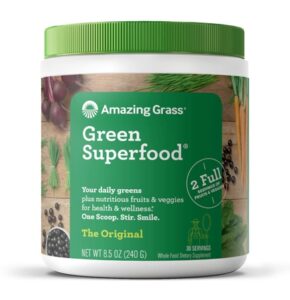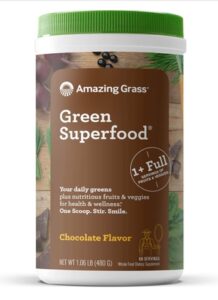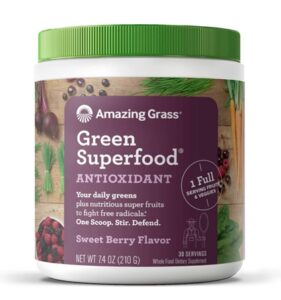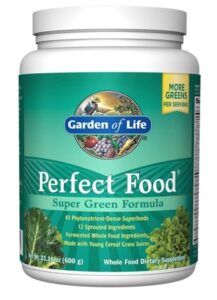 Plant foods deliver health in remarkable ways. They are your best weapon for preventing virtually every known chronic disease. This fact has been proven many times over by scientific studies on large numbers of people. The evidence in support of the disease-fighting properties of vegetables, fruits, legumes, whole grains, nuts, seeds and teas is so strong that it has been endorsed by every major medical organization, including the American Cancer Society.
Plant foods deliver health in remarkable ways. They are your best weapon for preventing virtually every known chronic disease. This fact has been proven many times over by scientific studies on large numbers of people. The evidence in support of the disease-fighting properties of vegetables, fruits, legumes, whole grains, nuts, seeds and teas is so strong that it has been endorsed by every major medical organization, including the American Cancer Society.
Plant foods help reduce your risk of many chronic diseases including cancer, high blood pressure, diabetes, heart disease, stroke and other diseases. Vegetables and fruits in particular are so important in the battle against cancer that some experts have said that cancer is a result of a “maladaption” over time to a reduced level of intake of vegetables and fruits. As a study published in the medical journal Cancer Causes & Control put it, “Vegetables and fruit contain the anticarcinogenic cocktail to which we are adapted. We abandon it at our peril.”
Plant foods provide a special family of nutrients called phytonutrients (pronounced “fight-o-nutrients”) that work together with vitamins, minerals, and fiber to promote good health. Unlike the traditional nutrients (protein, fat, vitamins, minerals), phytonutrients are not yet considered “essential” for life, so they are sometimes referred to as “phytochemicals”.
These important compounds give plant foods their colors, flavors, and disease-fighting abilities. The more intense the color, the greater the concentration of phytonutrients. Each color offers the body different phytonutrients that protect our body in different ways, therefore we must eat a wide variety of plant foods in order to benefit from all the different functions. Research shows that the more colors you eat at once, the more powerful they are, because of the synergy that happens.
The ways phytonutrients work in our body is an ongoing area of research. Some studies show that phytonutrients can:
- Act as antioxidants
- Stimulate enzymes that remove toxins and carcinogens from our body
- Strengthen the immune system
- Keep hormones balance
- Act as antibacterial or antiviral agents
- Cause cancer cells to die
- Repair DNA damage caused by smoking and other toxic exposures
Thousands of phytochemicals have been identified, but there are still many more that yet to be identified. It is estimated that there are thousands of different phytochemicals in any one typical fruit or vegetable. Tomatoes alone are believed to contain an estimated 10,000 different phytochemicals!
Of all the phytonutrients, we probably know the most about carotenoids, the red, orange and yellow pigments in fruits and vegetables.
Another large class of phytonutrients are the polyphenols, which are classified as non-flavonoids and flavonoids. The flavonoids quercetin and catechins are the most extensively studied polyphenols for their role in lowering cholesterol and preventing heart disease and cancer. Food sources rich in polyphenols include chocolate, onion, apple, tea, red wine, red grapes, grape juice, strawberries, raspberries, blueberries, cranberries, and certain nuts. Natural raw sugarcane is also high in polyphenols.vegetables that are high in carotenoids appear to protect humans against certain cancers, heart disease and age related macular degeneration. The carotenoids consist of alpha-carotene, beta-carotene, lutein, lycopene, and zeaxanthin. Beta-carotene is converted to vitamin A in the body and has strong antioxidant properties.
There’s no recommended dietary allowance for phytonutrients, and supplements can’t compete with the real thing. The best way to get the full benefits is the most natural: Indulge in all the colors your imagination, or plate, will allow.
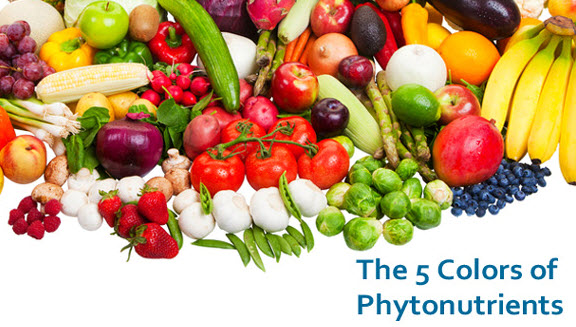 Each of the following five color groups is associated with one or more phytonutrients:
Each of the following five color groups is associated with one or more phytonutrients:
Red: Some red foods get their tint from lycopene, which may reduce the risk of lung, stomach, and prostate cancers. Sources: pink guavas, red grapefruits, red papayas, red grapes, strawberries, tomatoes, red bell peppers, watermelons.
Yellow/Orange: These hues tend to signal the presence of beta-carotene, which may help prevent heart disease as well as lung and colon cancers. Beta carotene converts to vitamin A in the body, so these foods will be the same colors as vitamin A foods. Sources: apricots, cantaloupes, carrots, mangoes, papayas, peaches, persimmons, yellow squash, pumpkins and winter squashes, sweet potatoes.
Green: Green veggies owe their green color to a special phytochemical called chlorophyll. Chlorophyll is the green pigment of all green plants, including green foods such as leafy vegetables like lettuces, spinach and kale, broccoli, wheat grass, and the algae superfoods known as spirulina and chlorella.
Vegetables and fruits in this color, particularly the dark ones, often contain several other phytonutrients, including lutein (which protects the eyes) and beta-carotene. More Sources: bok choy, collard greens, cucumbers, kiwis, green peas, green beans, Swiss chard, and zucchini.
Blue/Purple: Foods in these shades are rich in anthocyanins, phytonutrients that have antiaging and anticancer effects and help to promote circulatory function. Sources: blackberries, black currants, blueberries, grapes, raisins, plums, red cabbages, eggplant and red onions.
White: Pale members of the allium family contain allicin, which boosts the immune system, and some are also a source of quercetin, a natural anti-inflammatory agent. Sources: garlic, leeks, onions, shallots.
It’s important to focus on getting as many different colored plant foods in your meals each day in order to reap the many benefits each of the colors provide. One easy way to get high amounts of phytonutrients is to juice your vegetables. In my next article I will be talking about the benefits of carrot juice.
If you don’t have a juicer, another easy and convenient way to add phytonutrients to your diet is to supplement with a green superfood powder. Green superfood powders are dehydrated vegetables, fruits, herbs and superfoods that are packed with a plethora of vitamins, minerals, plant based protein and phytonutrients. Back in the times of the Mayans, they would dry their seasonal fruits and vegetables in the sun and then grind them into powders so they could save them for the times of year when those foods were out of season. They knew that their bodies needed the nutrients contained in those foods, so they would save the powders and sprinkle them into their drinks or onto their foods, essentially supplementing with green superfoods!
Today, the technology is more sophisticated than drying in the sun, but the concept is the same. Green foods and other fruits and vegetables are dehydrated at low temperatures to retain their enzymes and keep their nutrients intact, and can then be rehydrated with water or juice and drank to ensure you get adequate amounts of phytonutrients. My favorite brand of Green Superfood powder is Amazing Grass, which comes in many different flavors, including chocolate (a superfood on its own), berry, watermelon, and many others. Click below to see all the Amazing Grass flavors.
Michael Murray, N.D., Joseph Pizzorno, N.D., Lara Pizzorno, M.A., L.M.T., The Encyclopedia of Healing Foods (New York: Atria Books, 2005), 18.
USDA Agricultural Research Service, Phytonutrient FAQ’s, https://www.ars.usda.gov/

